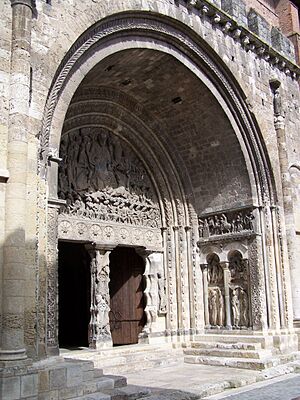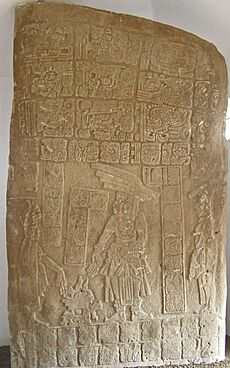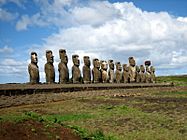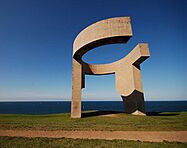Monumental sculpture facts for kids
"Monumental sculpture" is a term often used in art history and art discussions. It usually describes sculptures that are very large. Think of human figures that are about half life-size or bigger; art experts would often call these "monumental." This type of sculpture is different from small, easy-to-carry items like tiny figurines or small metal carvings.
The term also describes sculptures that are part of a building or a monument. This can include carvings on columns or reliefs attached to walls, even if they are not huge. Monuments often mark graves, remember important people, or show the power of a ruler or community. Churches and religious statues are also often included in this group. Sometimes, "monumental sculpture" might specifically mean art made for church monuments, like tomb sculptures.
Some art experts also use "monumental" to mean something more than just size. They might use it for art that feels grand, noble, or timeless. It's about art that is simple in its design and looks like it will last forever, much like great buildings. So, it's not just a word for "large," but also for art that has a powerful, lasting feeling. For example, the huge carving on the tympanum (the arch above a doorway) at Moissac Abbey is seen as truly monumental. It's very big and dominates the whole entrance, making it feel grand and important.


Contents
What "Monumental" Means in Art
The meaning of "monumental sculpture" can change depending on the time period. For most of history, only wealthy societies could create very large sculptures that were just for decoration. So, for a long time, the term usually meant large art that served an important purpose.
Ancient and Medieval Art
In ancient and medieval times, "monumental sculpture" usually referred to the size of the artwork. It included large statues and smaller carvings that were part of buildings.
Early Modern Art
Around the Renaissance period, the term sometimes specifically meant sculptures made for funerals or tomb monuments. These were often found in churches.
Contemporary Art
For contemporary art (art from recent times), "monumental sculpture" usually means any very large sculpture. These artworks are often more than two meters (about 6.5 feet) tall or wide. They are usually permanent and solid, not temporary or fragile. Many are created as public art and placed in outdoor spaces for everyone to see.
Monumental Sculpture Through History
When Cultures Start Making Big Art
In archeology and art history, when a culture starts making monumental sculpture, it's a big deal. It shows that the society is well-organized. Creating huge sculptures means they can gather many resources. They need to transport heavy materials and pay skilled sculptors. Sometimes, we don't know about early monumental sculpture because it was made from wood or other materials that don't last. For example, totem poles are monumental sculptures made of wood that would not survive for archaeologists to find.

In Ancient Egypt, the Great Sphinx of Giza is a famous example of very early monumental sculpture. It's thousands of years old! In 1986, an 8.5-foot-tall bronze statue was found in ancient China at Sanxingdui. This discovery changed many ideas about early Chinese civilization, as only much smaller bronzes were known before. Some advanced cultures, like the Indus Valley civilization, didn't seem to have monumental sculpture, even though they made very detailed small figures. Other cultures, like Ancient Egypt and Easter Island, put huge effort into creating massive sculptures very early on.
When Big Art Disappears
Sometimes, a culture stops making monumental sculpture. This can happen for several reasons. One common reason is a societal collapse, like in Europe during the Dark Ages or the Classic Maya collapse in Mesoamerica. Another reason can be aniconism, which means avoiding images, often for religious reasons.
For example, the rise of Christianity (at first) and later the Protestant Reformation stopped the creation of religious monumental sculpture in many areas. This greatly reduced the production of any monumental sculpture for centuries. Byzantine art, which avoided the collapse of the Western Roman Empire, never really went back to making large human-like sculptures. They even banned two-dimensional religious art for a while during the Byzantine iconoclasm.
Gallery
-
Ahu Tongariki on Easter Island. This is a group of 15-moai statues that were restored in the 1990s.
-
Płomienne ptaki (Fire Birds) (1977) by Władysław Hasior in Koszalin, Poland.
-
Elogio del Horizonte (Eulogy to the Horizon), a concrete sculpture from 1989. This is a contemporary monumental sculpture by Eduardo Chillida in Gijon, Spain.
See also
- Architectural sculpture





